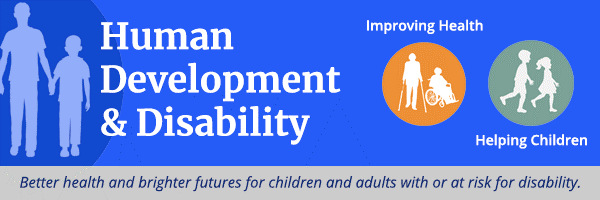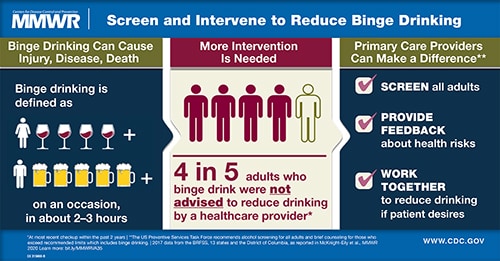DHDD Newsletter – April 2020

A Note from the DHDD Director:
Dear colleagues –
It’s hard to believe April is already here! This is certainly an unprecedented time and many of us are balancing work, family, caretaking, and other responsibilities. It is important to take care of your physical and mental health during this time. Finding new exercise routines, trying out new healthy recipes, meditating, and finding some time to relax can all be ways to help ensure continued health and wellness.
I have been working on the COVID-19 response for the past several weeks. I am hopeful that my work on the At-Risk Task Force helps to ensure that the unique needs of the populations we serve are accounted for. I am thankful for my colleagues in DHDD who continue to move our DHDD priorities forward. I am also very thankful to you for all you do to keep our important work moving forward and to support your colleagues during this challenging time!
Please visit our Daily Life and Coping page on the CDC site for some helpful information.
Thank you,
Georgina Peacock, Director, Division of Human Development and Disability
In the Spotlight

New COVID-19 Tools and Resources
Additional COVID-19 resources in American Sign Language (ASL) were posted this month on CDC’s YouTube page.
- When to get medical care for COVID-19
- Social Distancing
- COVID-19 Do Your Part to Slow the Spread
- Managing Anxiety and Stress
- Parents Supporting Children
- Caring for Someone at Home Who May Have COVID-19
- What You Need to Know About Handwashing
- COVID-19: Are You At Higher Risk for Severe Illness?
- Use the Coronavirus Self Checker to help decide when to call a doctor
- How does COVID-19 spread?
- Tips to Keep Children Healthy While School is Out
- What is the Risk to Pregnant Women?
- Can COVID-19 be passed from a pregnant woman to the fetus or newborn?
- Answering Question from Children about COVID-19
- Face Covering Intro (combined with Surgeon General Video)
This is a rapidly evolving response. Please continue to refer to CDC’s website for the latest information and please share these links with your partners, clients, patients, friends and family.
Funding Opportunity: Outcomes and Developmental Data Assistance Center for EHDI
Date Extended!
Due Date for Applications: 05/21/2020

You still have time to apply for CDC’s Notice of Funding Opportunity (NOFO) for a new three-year project called Outcomes and Developmental Data Assistance Center for EHDI (ODDACE) Programs. While using intervention and outcomes data can inform decisions and support positive outcomes among children who are deaf or hard of hearing (D/HH), states often lack the capacity to systemically gather these data. The purpose of this NOFO is to establish and support a new outcomes center to coordinate and assist participating states and strategic partners in determining how best to gather, analyze, and use specific intervention and developmental outcomes data.
Expected project outcomes include:
- Strategic partners have accurate and standardized surveillance data on the outcomes of children who are D/HH.
- Increased understanding of factors impacting the outcomes of children who are D/HH at the state and national level.
Inclusive Healthy Communities Model Webpages

1 in 4 adults in the U.S have a disability. It’s important that people with disabilities are included in everyday activities and have access to inclusive disease prevention and health promotion programs and resources that they need to reach their optimal health.
CDC and the National Association of Chronic Disease Directors (NACDD) now provide information and resources that public health practitioners can use to build inclusive communities that help improve the health and well-being of people with disabilities.
Visit the Inclusive Healthy Communities Model (IHCM) webpages and see how 10 communities in 5 states used IHCM to implement disability inclusion strategies and make healthy living easier for all people across community sectors (e.g., school, work site, health care) where they live, learn, work, play, pray and receive care.
Listen to experts from these communities, watch their success stories and learn how you can also apply IHCM in your community to promote inclusion and accessibility, and to reduce health disparities.
Communicating With and About People With Disabilities

About 1 in 4, or 61 million, U.S. adults reports having a disability. Disability is part of the human experience, but sometimes people use words or phrases that are insensitive and do not promote understanding, dignity, and respect for people with disabilities. More often than not, this is not intentional, but can be hurtful just the same.
Read the recently updated CDC’s fact sheet on how to communicate with and about people with disabilities using people-first language and find other helpful tips.
Publications
Middle Ear Effusion in Children With Congenital Cytomegalovirus Infection

Researchers from CDC’s National Center on Birth Defects and Developmental Disabilities (NCBDDD) and National Center for Immunization and Respiratory Diseases (NCIRD) recently published a study in the Pediatric Infectious Disease Journal looking at the prevalence of middle ear effusion or MME (i.e. presence of fluid in the middle ear without an actual ear infection) and associated degree of temporary hearing loss among symptomatic and asymptomatic children diagnosed with Cytomegalovirus (CMV) infection at birth.
Researchers found that
- MEE was more common in children born with symptomatic CMV infection than in children born with asymptomatic CMV infection.
- In 11 children with MEE, for which researchers conducted audiological evaluations, the temporary hearing loss was in the range of 10–40 decibels Hearing Level (dBHL).
Among children with CMV infection at birth, MEE can result in temporary hearing loss, which can reduce the efficacy of a hearing aid in those with Sensorineural hearing loss (SNHL). It is important that children diagnosed with CMV infection at birth and SNHL receive routine audiologic testing to better manage hearing aid amplification levels.
Self-reported Short Sleep Duration Among US Adults With Disabilities

Researchers from CDC’s National Center on Birth Defects and Developmental Disabilities and National Center for Chronic Disease Prevention and Health Promotion recently published a study in the Disability and Health Journal looking at sleep duration among people with disabilities.
Using data from the 2016 Behavioral Risk Factor Surveillance System, researchers found that people with disabilities had a higher likelihood of reporting short sleep duration (less than 7 hours of sleep per 24-hour period) than those without disabilities (43.8% vs. 31.6%).
Assessment of sleep duration may be an important component in providing medical care to people with disabilities.
Parenting Program Engagement Among Spanish-Speaking Mothers

Researchers from CDC’s National Center on Birth Defects and Developmental Disabilities recently published a study in the Infant and Mental Health Journal looking at parent engagement in Legacy for ChildrenTM, an evidence-based parenting program that is being piloted with Spanish-speaking Latina mothers.
Researchers analyzed themes across English and Spanish versions of the program curriculum to identify factors specific to Spanish-speaking Latina mothers that support participation. They found that both the English and Spanish curriculum versions had several common barriers and facilitators, suggesting that group-based parenting programs may need to attend to families’ social circumstances regardless of participants’ culture or language. Transportation, other children’s needs, the program design/delivery, and curriculum session materials were important factors for Legacy Spanish participants. The findings from this study have several implications for family engagement in parenting programs.
Screening for Alcohol Use and Brief Counseling of Adults

A new report from CDC found that although 81% of US adults in 13 states and Washington, D.C. reported being asked by their healthcare provider about alcohol use during a routine checkup in the last 2 years, only about 38% reported being asked about binge drinking. Binge drinking is 5 or more drinks on an occasion for men and 4 or more for women.
The report found that 80% of respondents (or 4 of 5 persons) who reported binge drinking currently and being asked about alcohol use at last checkup were not advised to reduce their drinking. Routine alcohol screening and brief counseling has been shown to be effective at reducing binge drinking and is recommended for all adults.
The data for this report come from CDC’s Behavioral Risk Factor Surveillance System – an annual state-based phone survey of U.S. adults aged 18 years and over.
DHDD’S mission is to lead inclusive programs to optimize the health and development of children and adults with, or at risk for, disabilities.
